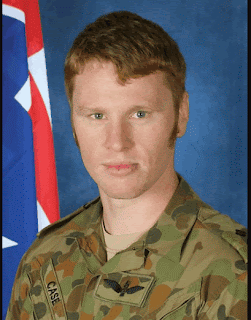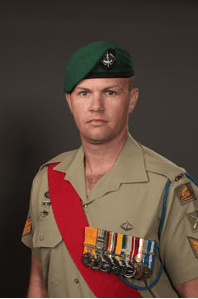 |
LEST WE FORGET
- The Digger's unspoken, unbreakable creed was the miner's and bushman's, "Stand by your mate."
- C.E.W. Bean, The AIF in France 1918
How dare we sit idly by and allow this country to go down the dunny, how fucking dare we. Absolute disgrace and a punch in guts for our fallen, they are weeping from above as they watch this Nation turn into some sort of melting pot for those who do not give a fuck or one ounce of loyalty to Her
Federation Through The World Wars
 |
| LEST WE FORGET,past and present |
- On 1 March 1901, 28,923 colonial soldiers, comprised of 1,457 permanent, 18,603 militia and 8,863 unpaid volunteers, were transferred to the new Australian Army.
- The Royal Australian Air Force was later established as a separate service, in 1921 the development of aviation and its use in war had not passed unnoticed, and by 1912 the Military Board had approved the formation of the Australian Flying Corps and the establishment of a Central Flying School at Point Cook, Victoria.
- In June 1911, the Royal Military College, Duntroon, was established.
- In 1911, 155,000 youths were registered, of whom 90,000 were in training, with 20,000 inducted each year until the outbreak of World War I.
- ANZAC Day was first marked on 25 April 1916, the anniversary of the landing of Australian and New Zealand troops at Gallipoli the year before. By early 1916, recruiting in Australia had made it possible to replace the ANZAC losses.
- Following the declaration of war on 4 August 1914, the Fisher Government's pledge of full support for Britain led to the raising of what became known as the Australian Imperial Force (AIF ).The AIF strength in France was maintained at some 117,000 men. Its battle casualties for the three years of trench warfare between 1916 and 18 were over 181,000; of whom over 46,000 died. Another 114,000 were wounded, 16,000 gassed and nearly 4,000 were taken prisoners of war. In terms of total deaths per 1000 men mobilised, the AIF figure was 145 - the highest of all the British Commonwealth armies
- The years between the wars were difficult for the Australian Army. The public’s reactions to the immense cost of the War were exhaustion, apathy and stagnation, compounded by national economic problems..
- In the decade prior to 1929, opposition to compulsory training scheme began to grow and the Australian Labor Party, elected on a policy which included the abolition of universal training, terminated the scheme in November 1929. Henceforth, Australia was to have an all-volunteer, primarily part-time 35,000 strong Army. In 1931, even though Japan invaded Manchuria international tension increased, unit strengths decreased even further.
- Germany invaded Poland on 1 September 1939 and two days later Britain and France were once more at war with Germany. Australia, as a consequence, was also at war on the 3rd of September 1939. Australia went to war with an ill-equipped and incompletely trained Army, still home-bound by the provisions of the Defence Act Strangely enough the first round fired by Britain and the Dominions was again fired from the Fort Nepean Battery. A freighter repeatedly refused to be identified and attempted to enter Port Phillip at 1.50 am on 4 September, only five hours after the declaration of war. One round was sufficient for the SS 'Woniora' to establish her friendly intentions..
- 1942, Australian losses for the whole period of the El Alamein operations from 7 July were 5809, including 1225 dead, 3638 wounded and 946 taken prisoner.
- In December 1941 Australia's seven militia divisions were mobilised and, early in January 1942, Australia agreed to redeploy the 1st Australian Corps (6th and 7th Divisions ) from the Middle East to the Far East.
- Allied intentions for 1943 included plans to recapture the Solomons as far as southern Bougainville, the New Guinea coast as far as Madang and the west coast of New Britain.
- From over 724 000 enlistments, with almost 400,000 serving outside Australia, there were over 18,000 deaths, 22 000 wounded and over 20 000 prisoners of war, mainly from the early stage of the war with Japan.
- In 1947, the Australian Army's involvement in multinational peacekeeping had commenced,.
- A National Service scheme was reintroduced in 1965. The cause was both Government concerns with Australia's capacity to deal effectively with direct security concerns in the region. This period of national service involved, for most of the period, two years full-time duty.
- For the Australian Army, the withdrawal from Vietnam represented the end of 33 years of continuous operational duties, which had commenced with World War II, continued through the occupation of Japan, the Korean War, the Malayan Emergency and Indonesian Confrontation to the Second Indo-China War in Vietnam. Army casualties in Vietnam were 413 KIA/DoW, two MIA, 2026 WIA, 64 non-battle deaths and 999 other casualties.
- With the election in December 1972 of a new Labor government under Gough Whitlam, the completion of the withdrawal from Vietnam and the ending of the National Service scheme were immediately effected.
- The Iraqi invasion of Kuwait began on 2 August 1990, initiating the Second Gulf War. The UN-sanctioned operation to liberate Kuwait commenced on 17 January 1991, with the land offensive following on 24 February. A ceasefire was declared on 28 February, with a formal end to hostilities on 12 April 1991.
- In September 1999, Australian troops were deployed to East Timor as part of the International Force East Timor (INTERFET), under the command of Major General Peter Cosgrove. In February 2000, governance of military operations was passed from INTERFET to the United Nations Transitional Administration in East Timor (UNTAET) with Australia continuing to make a sizeable contribution.
- In 2003, following a tense stand-off between Iraqi President Saddam Hussein and his refusal to allow international weapons inspectors into the country, Australia joined a multinational combat force to Iraq as part of Operation Falconer.
- Operation Slipper is Australia’s ongoing commitment to the war in Afghanistan against the Taliban and Al Qaeda terrorists.
The Victoria Cross for animals
The Dickin Medal, instituted by Mrs Maria Dickin, founder of the People’s Dispensary for Sick Animals in England, was popularly referred to as "the animals’ VC". It was awarded to any animal displaying conspicuous gallantry and devotion to duty associated with, or under the control of, any branch of the Armed Forces or Civil Defence units during World War II and its aftermath.At least two Australian carrier pigeons attached to the Australian Army have received the Dickin Medal:
 | |||
|
 |
| Corporal G.R. Rayner of No.3 Section (HQ) Carrier Pigeon Unit No.17 Loft, reading a message removed from the container seen on the bird's leg |
- Blue bar cock No. 139:D/D:43:T Detachment 10 Pigeon Section (Type B) attached to Detachment 55 Port Craft Company, Madang 12 July 1945. Awarded the Dickin Medal for gallantry carrying a message through a severe tropical storm thereby bringing help to an army boat with a vital cargo, in danger of foundering.
- Blue chequer cock No. 879:D/D: 43: Q Loft No. 5 of 1 Australian Pigeon Section, attached to the US forces, Manus Island, Admiralty Islands 5th April 1944. Awarded the Dickin Medal for gallantry carrying a message through heavy fire thereby bringing relief to a Patrol surrounded and attacked by the enemy without other means of communication.
Peacekeeping 1979-1996
UNCMAC (Korea - Truce Supervision) 1953-*
UNTSO (Middle East - Truce Supervision) 1956-*
ONUC (Congo - Medical Assistance) 1960-61.
UNTEA (West New Guinea - Helicopter Support) 1962.
UNYOM (Yemen - Truce Supervision) 1963.
UNIPOM (India/Pakistan - Truce Supervision) 1965-66.
UNDOF (Syria - Disengagement Observers) 1974-*
UNEF II (Sinai - Truce Supervision, Staff) 1976-80.
UNIFIL (Lebanon - Truce supervision) 1978.
From 1979, the scale of Australian Army commitments generally increased significantly, in several cases to major unit level:
Commonwealth Monitoring Force (CMF) (Rhodesia - Observers) 1979-80.
Multinational Force and Observers (MFO) Sinai - Aviation, Staff) 1982-86, 1993-*
UNIIMOG (Iran - Truce Supervision) 1988-90.
UNTAG (Namibia - Engineer Assistance) 1989-90.
UNMCTT (Afghanistan/Pakistan - Mine Clearance Training) 1989-93.
MIF I (Gulf - Air Defence Detachment for RAN ship) 1990-91.
MNF (I-K) (Iraq/Kuwait - miscellaneous detachments) 1990-91- see Gulf War 1990-91.
UNSCOM (Iraq - Inspection of weapons capabilities) 1991-1999.
MINURSO (Western Sahara - Communications) 1991-94.
UNAMIC (Cambodia - Communications) 1991-92.
UNTAC (Cambodia - Unit Communications, etc) 1992-93.
UNPROFOR (Former Yugoslav states – Observers) 1992-93.
UNOSOM (Somalia - Movement control) 1992; 1993-95 UNITAF (Somalia - Protection of Humanitarian Aid) 1992-93.
UNAMIR (Rwanda - Medical Support and Protection) 1994-95.
UNOMOZ (Mozambique - Military observers) 1994.
SPPKF , TMG/PMG (Bougainville) 1994, 1997-2003.
UNMIH (Haiti - Attached to US Forces) 1994-1995.
MINUGUA (Guatemala –-Military observers) 1997.
SFOR, KFOR (Yugoslavia and Kosovo - Peacekeeping) 1997-*
RAMSI (Solomon Islands – security) 2000-Present-*
UNMEE (Ethiopia/Eritrea - Training) 2000-2005.
IMATT (Sierra Leone - Advice and Training) 2000-2003.
UNMIS (Sudan - Air movement and logistics) 2005-*.
UNAMID (Darfur - Logistics and operations) 2007-*.
Ladies In Lines, doco about women recruits
Part 1 http://www.youtube.com/watch?v=3A9NQs3YkvI
Part 2 http://www.youtube.com/watch?v=9comUsxDBOM&feature=related
Part 3 http://www.youtube.com/watch?v=PfXtBW2pSPE&feature=related
Part 4 http://www.youtube.com/watch?v=yhhUqKMeF70&feature=related
Part 5 http://www.youtube.com/watch?v=cSV5cTqqZNI&feature=related
Western Front WW1 http://www.youtube.com/watch?v=46SocXCb4MM
Australian Army http://www.youtube.com/watch?v=dgVjcc1aghs
Dancing digger http://www.youtube.com/watch?v=UpIao6kNu2M
Sabi http://www.youtube.com/watch?v=u9sAO1MP05U
Hall Of Valour is now open in Canberra http://www.awm.gov.au/visit/visit-mustsee-valour.asp
Remembrance http://www.awm.gov.au/commemoration/
People profiles, remarkable people http://www.awm.gov.au/people/index.asp
Army http://www.army.gov.au/ahu/
Dept. Of Defense http://www.defence.gov.au/
Army Internet links http://www.army.gov.au/
Oceanskykhaki http://oceanskykhaki.blogspot.com/
Care packages for deployed http://concernedaussies.blogspot.com/2011/01/care-packages-for-our-deployed.html
Disgrace http://www.adelaidenow.com.au/news/national/soldiers-forced-to-pay-for-equipmentl/story-e6frea8c-1225929106776
UNCMAC (Korea - Truce Supervision) 1953-*
UNTSO (Middle East - Truce Supervision) 1956-*
ONUC (Congo - Medical Assistance) 1960-61.
UNTEA (West New Guinea - Helicopter Support) 1962.
UNYOM (Yemen - Truce Supervision) 1963.
UNIPOM (India/Pakistan - Truce Supervision) 1965-66.
UNDOF (Syria - Disengagement Observers) 1974-*
UNEF II (Sinai - Truce Supervision, Staff) 1976-80.
UNIFIL (Lebanon - Truce supervision) 1978.
From 1979, the scale of Australian Army commitments generally increased significantly, in several cases to major unit level:
Commonwealth Monitoring Force (CMF) (Rhodesia - Observers) 1979-80.
Multinational Force and Observers (MFO) Sinai - Aviation, Staff) 1982-86, 1993-*
UNIIMOG (Iran - Truce Supervision) 1988-90.
UNTAG (Namibia - Engineer Assistance) 1989-90.
UNMCTT (Afghanistan/Pakistan - Mine Clearance Training) 1989-93.
MIF I (Gulf - Air Defence Detachment for RAN ship) 1990-91.
MNF (I-K) (Iraq/Kuwait - miscellaneous detachments) 1990-91- see Gulf War 1990-91.
UNSCOM (Iraq - Inspection of weapons capabilities) 1991-1999.
MINURSO (Western Sahara - Communications) 1991-94.
UNAMIC (Cambodia - Communications) 1991-92.
UNTAC (Cambodia - Unit Communications, etc) 1992-93.
UNPROFOR (Former Yugoslav states – Observers) 1992-93.
UNOSOM (Somalia - Movement control) 1992; 1993-95 UNITAF (Somalia - Protection of Humanitarian Aid) 1992-93.
UNAMIR (Rwanda - Medical Support and Protection) 1994-95.
UNOMOZ (Mozambique - Military observers) 1994.
SPPKF , TMG/PMG (Bougainville) 1994, 1997-2003.
UNMIH (Haiti - Attached to US Forces) 1994-1995.
MINUGUA (Guatemala –-Military observers) 1997.
SFOR, KFOR (Yugoslavia and Kosovo - Peacekeeping) 1997-*
RAMSI (Solomon Islands – security) 2000-Present-*
UNMEE (Ethiopia/Eritrea - Training) 2000-2005.
IMATT (Sierra Leone - Advice and Training) 2000-2003.
UNMIS (Sudan - Air movement and logistics) 2005-*.
UNAMID (Darfur - Logistics and operations) 2007-*.
Ladies In Lines, doco about women recruits
Part 1 http://www.youtube.com/watch?v=3A9NQs3YkvI
Part 2 http://www.youtube.com/watch?v=9comUsxDBOM&feature=related
Part 3 http://www.youtube.com/watch?v=PfXtBW2pSPE&feature=related
Part 4 http://www.youtube.com/watch?v=yhhUqKMeF70&feature=related
Part 5 http://www.youtube.com/watch?v=cSV5cTqqZNI&feature=related
Western Front WW1 http://www.youtube.com/watch?v=46SocXCb4MM
Australian Army http://www.youtube.com/watch?v=dgVjcc1aghs
Dancing digger http://www.youtube.com/watch?v=UpIao6kNu2M
Sabi http://www.youtube.com/watch?v=u9sAO1MP05U
Hall Of Valour is now open in Canberra http://www.awm.gov.au/visit/visit-mustsee-valour.asp
Remembrance http://www.awm.gov.au/commemoration/
People profiles, remarkable people http://www.awm.gov.au/people/index.asp
Army http://www.army.gov.au/ahu/
Dept. Of Defense http://www.defence.gov.au/
Army Internet links http://www.army.gov.au/
Oceanskykhaki http://oceanskykhaki.blogspot.com/
Care packages for deployed http://concernedaussies.blogspot.com/2011/01/care-packages-for-our-deployed.html
Disgrace http://www.adelaidenow.com.au/news/national/soldiers-forced-to-pay-for-equipmentl/story-e6frea8c-1225929106776


















 Previously served extensively in East Timor and was known for his positive attitude and loyalty. With outstanding specialist skills he loved his work. Respected by others he also will be missed. Survived by his wife and three children, he was also a devoted husband and father.
Previously served extensively in East Timor and was known for his positive attitude and loyalty. With outstanding specialist skills he loved his work. Respected by others he also will be missed. Survived by his wife and three children, he was also a devoted husband and father. 































